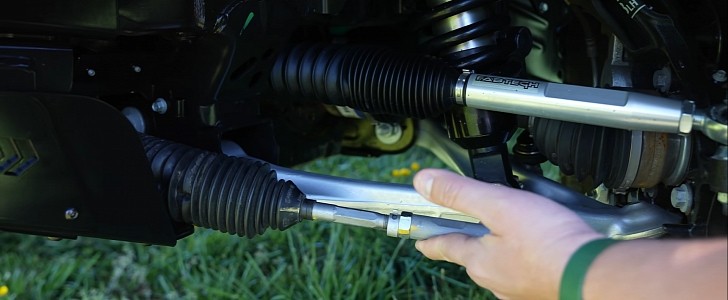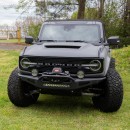Although it was designed for driving off the beaten path, the sixth-generation Bronco is equipped with thin little threaded tie rods that snap over bumps that hardly warrant such a failure. Blaming the beancounters in Dearborn is one thing, but taking matters into your own hands is recommended. Owners and prospective customers are offered a stout aftermarket solution from Fabtech Motorsports, a tie rod heim kit which is currently going for $988 on their website or $833 via TCcustoms.
“TC who?” The private label brand of customized vehicles from Town & Country Ford. As per managing partner Mitchell Watts, the original tie rods leave much to be desired. The weakest point is the threaded middle section, and one glance is sufficient to understand why these babies fail so easily.
Fabtech Motorsports, on the other went, designed heavy-duty replacements that provide increased strength for oversized tires and serious off-road shenanigans. The kit replaces the complete factory assembly from the inner joint connected to the steering rack all the way out to the steering knuckle.
Way better than bolt-on sleeves that improve the steering link’s outside diameter from half an inch to a full inch, this kit comprises 0.75-inch ID PTFE lined FK heim ends, 17-4 stainless-steel clevises and tapered pins, billet-aluminum adjusting sleeves with wrench flats for trouble-free adjustments, and two nitrile rubber dust boots for steering rack protection.
Fabtech Motorsports further notes the taper is similar to the factory tie rod, so there’s no need to drill the knuckle for installation. Of course, the aftermarket kit can be replaced with the OEMs if the customer so desires.
According to Fabtech, tie rods have to be retorqued every 50 miles (80 kilometers) until the torque specs maintain from the first to the second time. “When I put mine on, and I had them retorqued two or three times after that, every single time it held the torque specification,” added Mitchell Watts.








